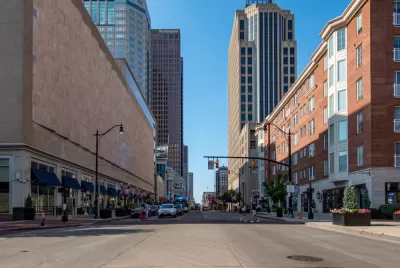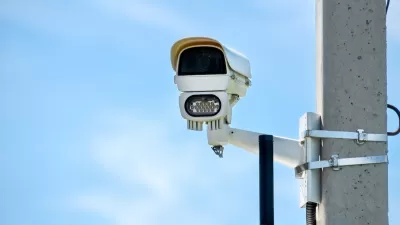The city council will vote on a proposal to lower speed limits to 25 miles per hour to improve safety and make downtown more walkable and welcoming to pedestrians.

Downtown Columbus could see its speed limit lowered to 25 miles per hour if the city council approves a proposal at this Tuesday’s meeting, reports Mark Ferenchik in The Columbus Dispatch.
According to Ferenchik, “The Downtown streets where speed limits would be limited to 25 mph are in an area bounded by Interstate 670 to the north, Interstate 71 to the east, Interstates 70 and 71 to the south, and the Scioto River and Neil Avenue to the west,” as well as part of the Scioto Peninsula.
The new rule would lower the speed limit from 35 miles per hour, a decrease that is shown to drastically reduce the risk of serious injury and death in crashes involving pedestrians. “Officials in Austin, Texas, studied intersections in that city where similar changes were made and found an 18% reduction year-to-year in the number of pedestrians hit by left-turning vehicles at Downtown intersections.” The plan must be approved by the Ohio Department of Transportation (ODOT) to move forward.
As part of its Vision Zero goal, the city also plans to adjust traffic light timing to slow traffic and change light timing at some intersections to give pedestrians a head start when crossing. The changes would align with the strategic plan developed by the Columbus Downtown Development Corporation, which calls for a more walkable downtown.
FULL STORY: Columbus City Council considers setting speed limit on all Downtown streets at 25 mph

Maui's Vacation Rental Debate Turns Ugly
Verbal attacks, misinformation campaigns and fistfights plague a high-stakes debate to convert thousands of vacation rentals into long-term housing.

Planetizen Federal Action Tracker
A weekly monitor of how Trump’s orders and actions are impacting planners and planning in America.

San Francisco Suspends Traffic Calming Amidst Record Deaths
Citing “a challenging fiscal landscape,” the city will cease the program on the heels of 42 traffic deaths, including 24 pedestrians.

Defunct Pittsburgh Power Plant to Become Residential Tower
A decommissioned steam heat plant will be redeveloped into almost 100 affordable housing units.

Trump Prompts Restructuring of Transportation Research Board in “Unprecedented Overreach”
The TRB has eliminated more than half of its committees including those focused on climate, equity, and cities.

Amtrak Rolls Out New Orleans to Alabama “Mardi Gras” Train
The new service will operate morning and evening departures between Mobile and New Orleans.
Urban Design for Planners 1: Software Tools
This six-course series explores essential urban design concepts using open source software and equips planners with the tools they need to participate fully in the urban design process.
Planning for Universal Design
Learn the tools for implementing Universal Design in planning regulations.
Heyer Gruel & Associates PA
JM Goldson LLC
Custer County Colorado
City of Camden Redevelopment Agency
City of Astoria
Transportation Research & Education Center (TREC) at Portland State University
Jefferson Parish Government
Camden Redevelopment Agency
City of Claremont





























